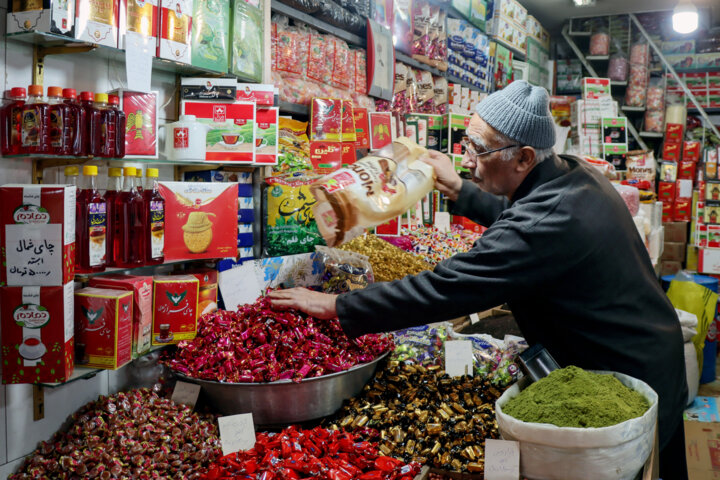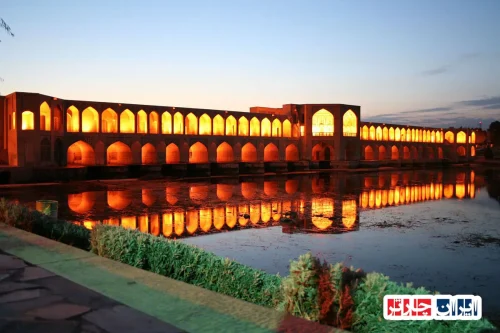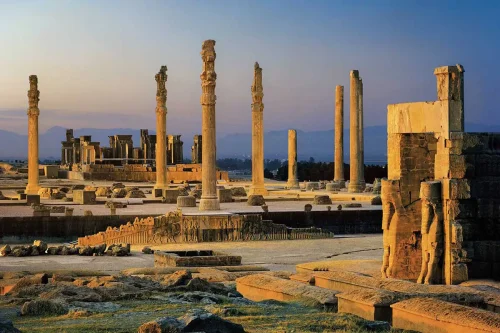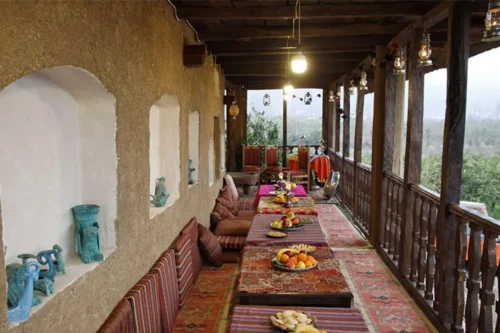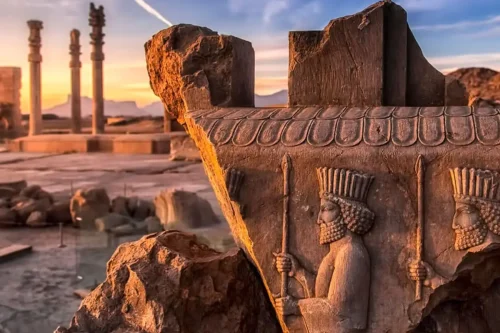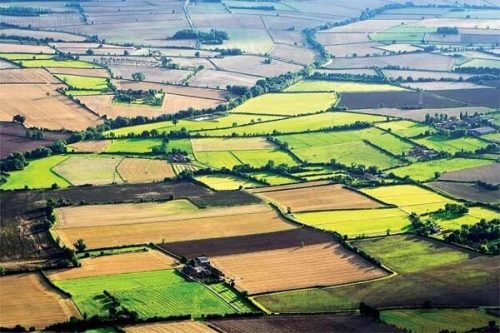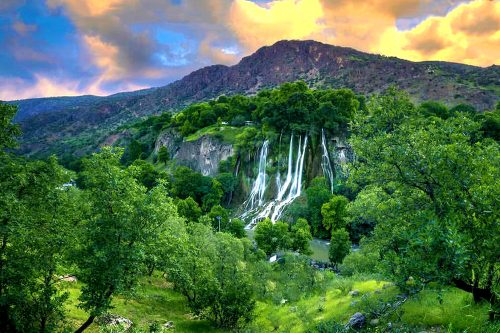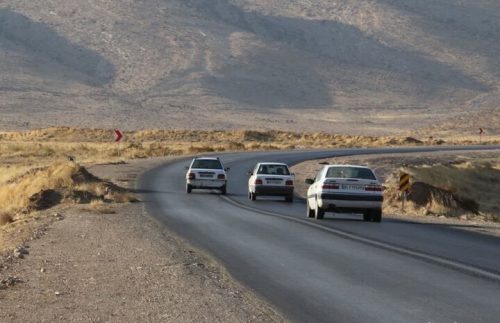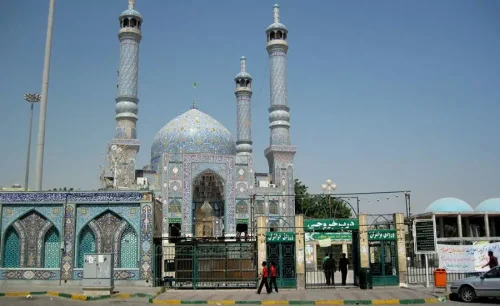News Source : https://www.irna.ir/news/85674627/%D8%A8%D8%A7%D8%B2%D8%A7%D8%B1-%D9%82%D9%84%D8%A8-%D8%AA%D9%BE%D9%86%D8%AF%D9%87-%D8%B2%D9%86%D8%AC%D8%A7%D9%86-%D8%B1%D8%A7-%D8%AF%D8%B1%DB%8C%D8%A7%D8%A8%DB%8C%D9%85
Discover the Beating Heart of Zanjan Bazaar
The Zanjan Bazaar, one of the largest and oldest markets in Iran, continues to be recognized as the economic and cultural heartbeat of this province. Built during the Qajar era, this bazaar has maintained its grandeur and won a special place in the Zanjan community despite numerous changes over time. Zanjan Bazaar is not only a hub for buying and selling a variety of goods but also a meeting place for exchanging ideas among the locals in this region. Its significance can be seen in attracting domestic and international tourists and its role in developing provincial handicrafts and traditional industries.
Iran Charter is considered a historical and archaeological landmark of the province, needing special care and maintenance to remain a cultural and economic symbol of the region. Challenges such as underground water and insufficient funding pose a serious threat to the survival of this market. Therefore, collaboration among the merchants, the market’s trusteeship, and governmental bodies is essential to protect this cultural treasure from potential harm through appropriate measures.
Additionally, the improper organization of electrical wiring and threats from ignoring heritage regulations are other challenges facing Zanjan Bazaar. These issues not only endanger the market’s safety but also affect its beauty and functionality. Iran Charter can overcome these challenges and maintain its status as one of the most important economic and cultural centers of Zanjan Province through intersectoral cooperation and proper financial resource allocation.
Iran Charter plays a significant role in enhancing the quality of life for the people of Zanjan and can become an engine for local economic growth by improving infrastructure and better introducing itself to tourists. Continuous and strategic support from officials can pave a bright and sustainable future for this historical market.
The History and Historical Buildings of Zanjan Bazaar
Zanjan Bazaar, one of the oldest and most prominent bazaars in Iran, was built during the Qajar era. With a history spanning over two centuries, it has witnessed numerous cultural and economic changes and is recognized as a symbol of the region’s history and civilization. There are numerous historical buildings around the bazaar, each with its unique story, and visiting them can reveal the historical depth of the market to visitors. The preservation and maintenance of these structures are of utmost importance to ensure that future generations can also benefit from this heritage.
The Role of Zanjan Bazaar in the Economy of the Province
Zanjan Bazaar serves as the economic heartbeat of the province, playing a vital role in meeting the consumption needs of the people and supporting local businesses. The market, providing a wide range of goods from handicrafts to food products, has contributed to trade prosperity and job creation in the region. Additionally, by attracting domestic and foreign tourists, Zanjan Bazaar aids in boosting the province’s foreign exchange revenues. Commercial activities in this market demonstrate the strength and dynamism of the local economy, which can be a suitable model for other regions.
Culture and Cultural Promotion in Zanjan Bazaar
Zanjan Bazaar is not only a place for buying and selling goods but also a cultural center. The bazaar hosts various ceremonies and festivals, providing a space for the exchange of ideas and the promotion of local culture. Social interactions in Zanjan Bazaar help strengthen social bonds and enhance the cultural identity of the people. Additionally, exhibition and art spaces within the bazaar offer local artists opportunities to showcase their talents.
Challenges Facing Zanjan Bazaar
Despite its importance and special status, Zanjan Bazaar faces several challenges. One of the most significant challenges is securing sufficient financial resources for the maintenance and restoration of historical buildings. Furthermore, issues related to subsurface water and the organization of electrical wiring are other major problems that require immediate attention. Noncompliance with heritage regulations by some shop owners can also lead to the deterioration of the market’s beauty and structure. Addressing these challenges requires close cooperation between shopkeepers, the market’s board of trustees, and governmental bodies.
Maintenance and Restoration Measures for the Bazaar
Several measures are underway to preserve and maintain Zanjan Bazaar. The Cultural Heritage Department of Zanjan Province allocates restoration funds to rebuild historical buildings and improve the market’s condition. Additionally, implementing emergency plans to mitigate existing risks and improve the market’s infrastructure is among the department’s priorities. Collaboration with experts and specialists in building repairs and maintenance ensures the survival of this cultural treasure, which must continue regularly and systematically.
Tourism and Visitor Attraction to Zanjan Bazaar
With its unique historical and cultural artifacts, Zanjan Bazaar is considered one of the province’s tourist attractions. Developing tourism infrastructure and enhancing services offered in the bazaar can help attract more visitors. Planning better ways to promote the market to domestic and foreign tourists through media and advertising campaigns plays a critical role in increasing awareness and popularity of the bazaar. These efforts not only boost the market’s economy but also elevate Zanjan’s cultural status both nationally and internationally.
Development of Handicrafts in Zanjan Bazaar
Zanjan Bazaar plays a key role in preserving and promoting local culture and art by offering traditional products and handicrafts. Supporting local artists and craftsmen by providing suitable spaces for displaying and selling their works allows for enhanced product quality and variety. The market also acts as a bridge between artists and buyers, which can foster the development of handicrafts and increase artists’ income. Educational programs and technical workshops in this area can lead to improved individual skills and product quality.
Intersectoral Collaborations in Zanjan Bazaar
The success and sustainability of Zanjan Bazaar require intersectoral collaboration and coordination among various institutions and organizations. Such collaborations include close interactions among the municipality, the market’s board of trustees, the Cultural Heritage Organization, and local businesses. These partnerships can result in improved market management, increased quality of services, and the execution of development projects. Moreover, the active participation of people and local businesses in the decision-making process fosters a sense of responsibility and commitment to market preservation and development.
The Future Outlook of Zanjan Bazaar
Considering the ongoing measures and development plans, the future of Zanjan Bazaar appears bright and promising. The primary goal is to maintain and enhance the economic and cultural status of the bazaar, potentially becoming a successful model for other historical markets. Investing in infrastructure, attracting new investments, and developing tourism services are among the strategies that can contribute to this vision. Additionally, continuous preservation and maintenance of cultural and historical heritage ensure the market’s survival in the coming years.
Frequently Asked Questions
- From which historical period was Zanjan Bazaar built?
- Zanjan Bazaar was built during the Qajar era and is recognized as the longest bazaar in Iran.
- What are the main challenges facing Zanjan Bazaar?
- The main challenges of Zanjan Bazaar include subsurface water, insufficient funds for restoration, electrical wiring issues, and noncompliance with protective regulations by some shop owners.
- How can preserving cultural heritage contribute to the economy?
- Preserving cultural heritage and introducing it to the world attracts tourists and invigorates the economy, transforming various economic sectors.
- What is the size of Zanjan Bazaar?
- Zanjan Bazaar covers an area of approximately 15 hectares.
- How is funding for the restoration of the bazaar provided?
- Restoration of Zanjan Bazaar is carried out using emergency restoration funds for historical and religious buildings, sourced provincially and nationally.
- What impact do subsurface waters have on Zanjan Bazaar?
- Subsurface waters threaten the structure of Zanjan Bazaar and require effective action from relevant agencies to resolve the issue.
- What are the regulations for the preservation and protection of Zanjan Bazaar?
- Protective regulations include no height increase, no balconies within shops, no scraping of walls and bases, and no installation of incongruous glass panels and signs.
- What are the electrical wiring problems in Zanjan Bazaar?
- Improper and inadequate electrical wiring in Zanjan Bazaar causes safety concerns and deteriorates the market’s appearance.
- What safety improvement measures have been implemented in Zanjan Bazaar?
- Measures include installing safe gas piping, initial fire-fighting equipment, and collective efforts in service-providing organizations to reduce fire risk.
- What is the role of the market’s board of trustees in maintaining the bazaar?
- The market’s board of trustees is responsible for coordinating with the municipality, managing restoration and organization of the market, and addressing underlying issues like wiring and subsurface water.
- How does Zanjan Bazaar operate as a local economic hub?
- Zanjan Bazaar is considered the local economic hub and the beating heart of trade in Zanjan, playing a significant role in local economic activities.
- What are the emergency access challenges to the bazaar?
- Emergency access to the bazaar is difficult due to blocked pathways and shopkeepers occupying passageways, requiring improved access routes.
- How can the risk of fire in Zanjan Bazaar be reduced?
- By implementing studies on fire risk assessment, installing fire detection and firefighting systems, conducting firefighting training, and organizing electrical wiring.
- What challenges exist in funding the market’s restoration?
- Funding for the market’s restoration requires substantial credits, which are challenging to obtain.
- What actions have been taken by service-providing companies in Zanjan Bazaar?
- Service-providing companies have carried out safe gas piping, organized electrical wiring, and updated emergency response systems.
- Why is Zanjan Bazaar recognized as one of the longest bazaars in Iran?
- Zanjan Bazaar is recognized as Iran’s longest bazaar due to its extensive area and structural length dating back to the Qajar era.
- What other cultural treasures exist in Zanjan Province?
- Other cultural treasures in Zanjan Province include the World Heritage Site Soltaniyeh Dome and Katale Khor Cave.
- What is the contact number for Iran Charter?
- The contact number for Iran Charter is 02191091190. You can also reach Iran Charter via email at info@irancharter.ir.

